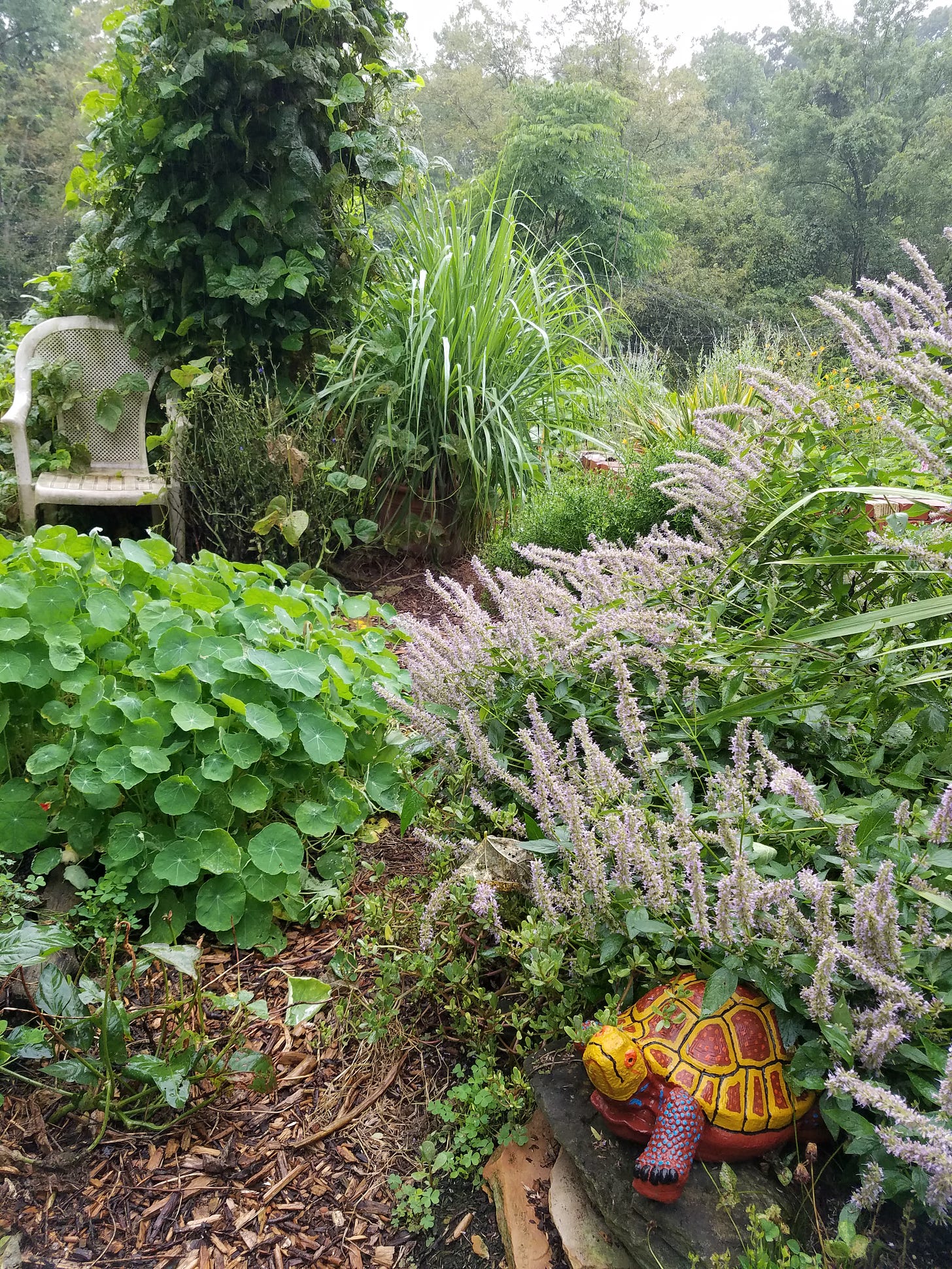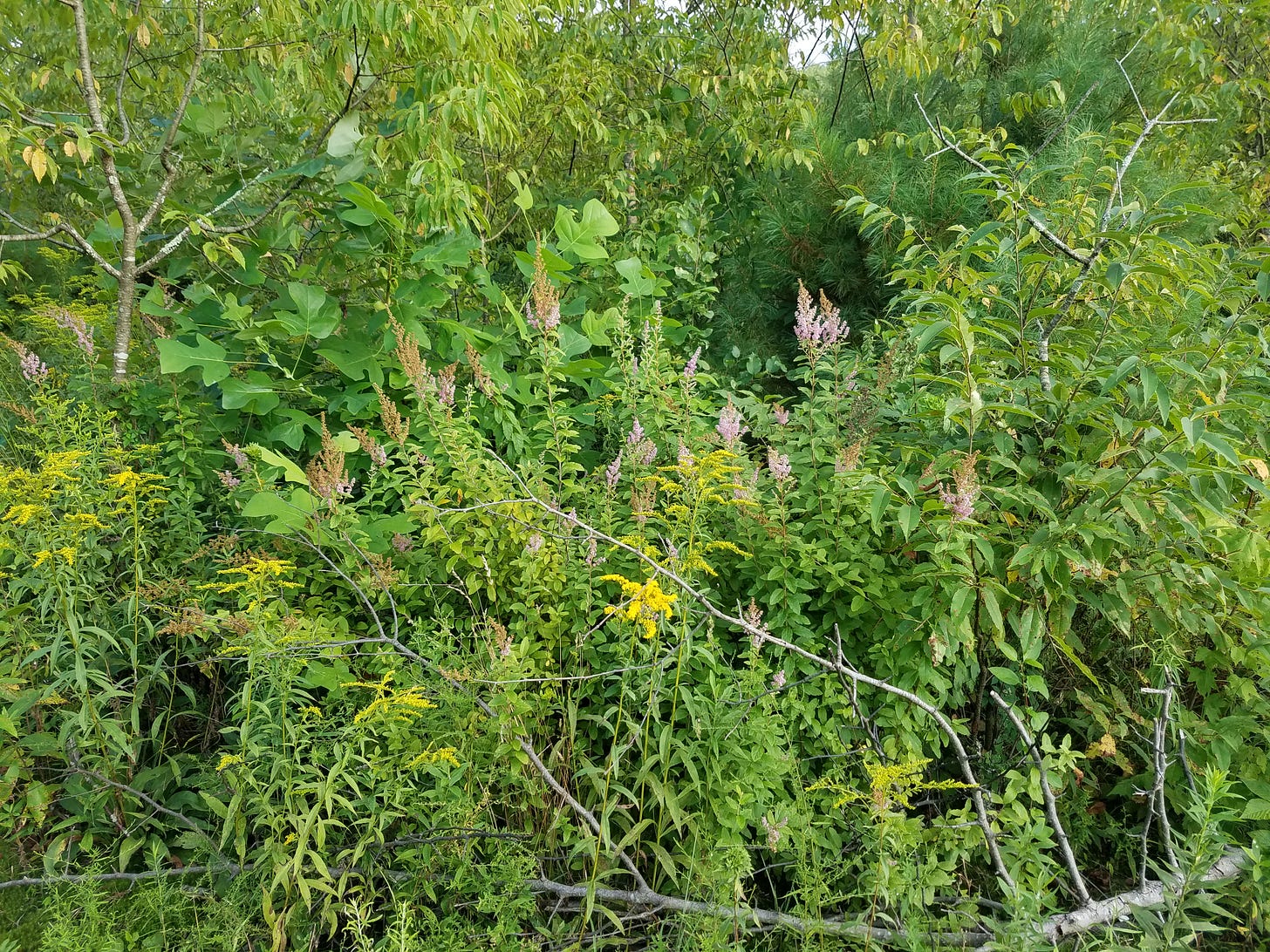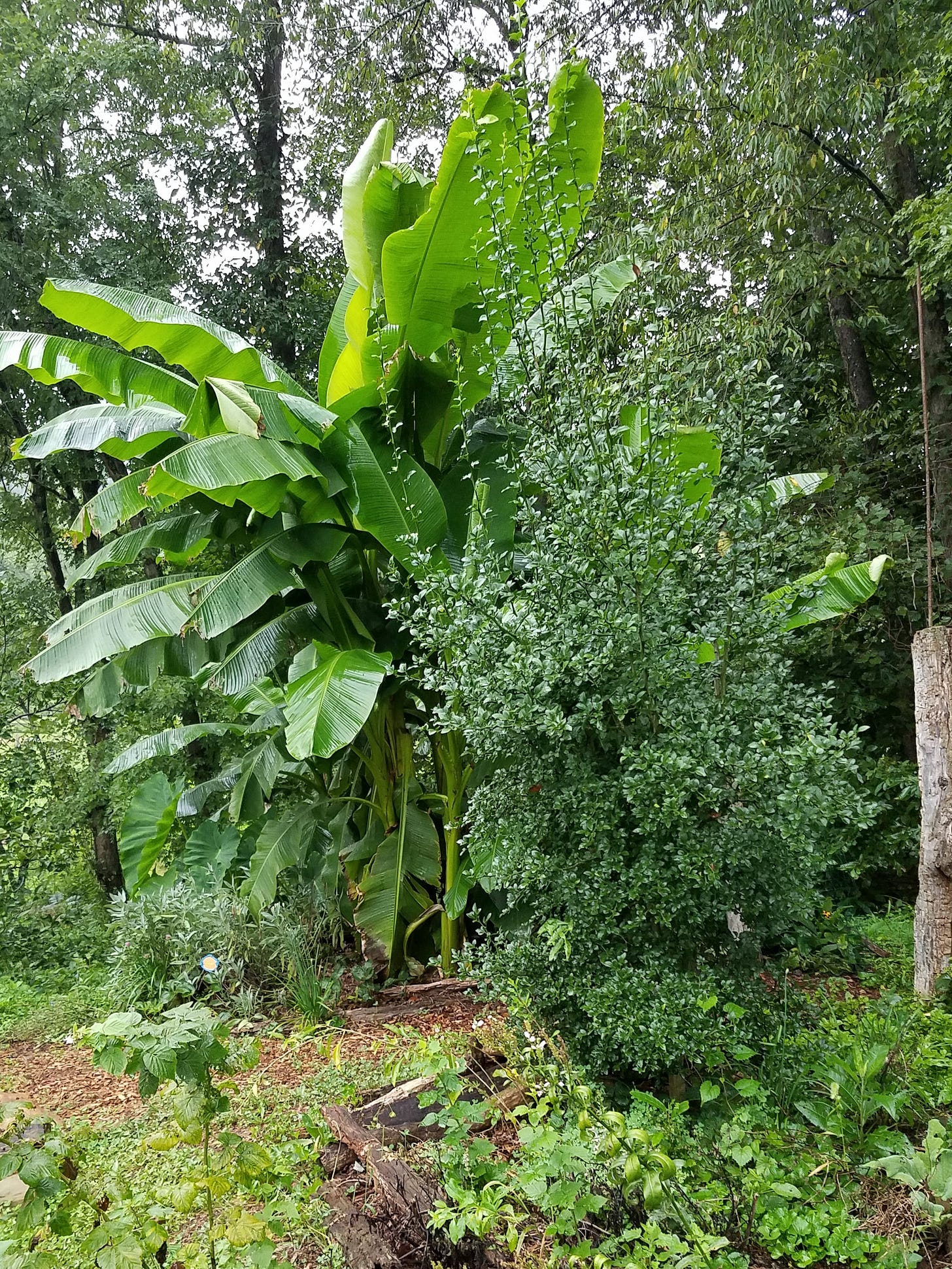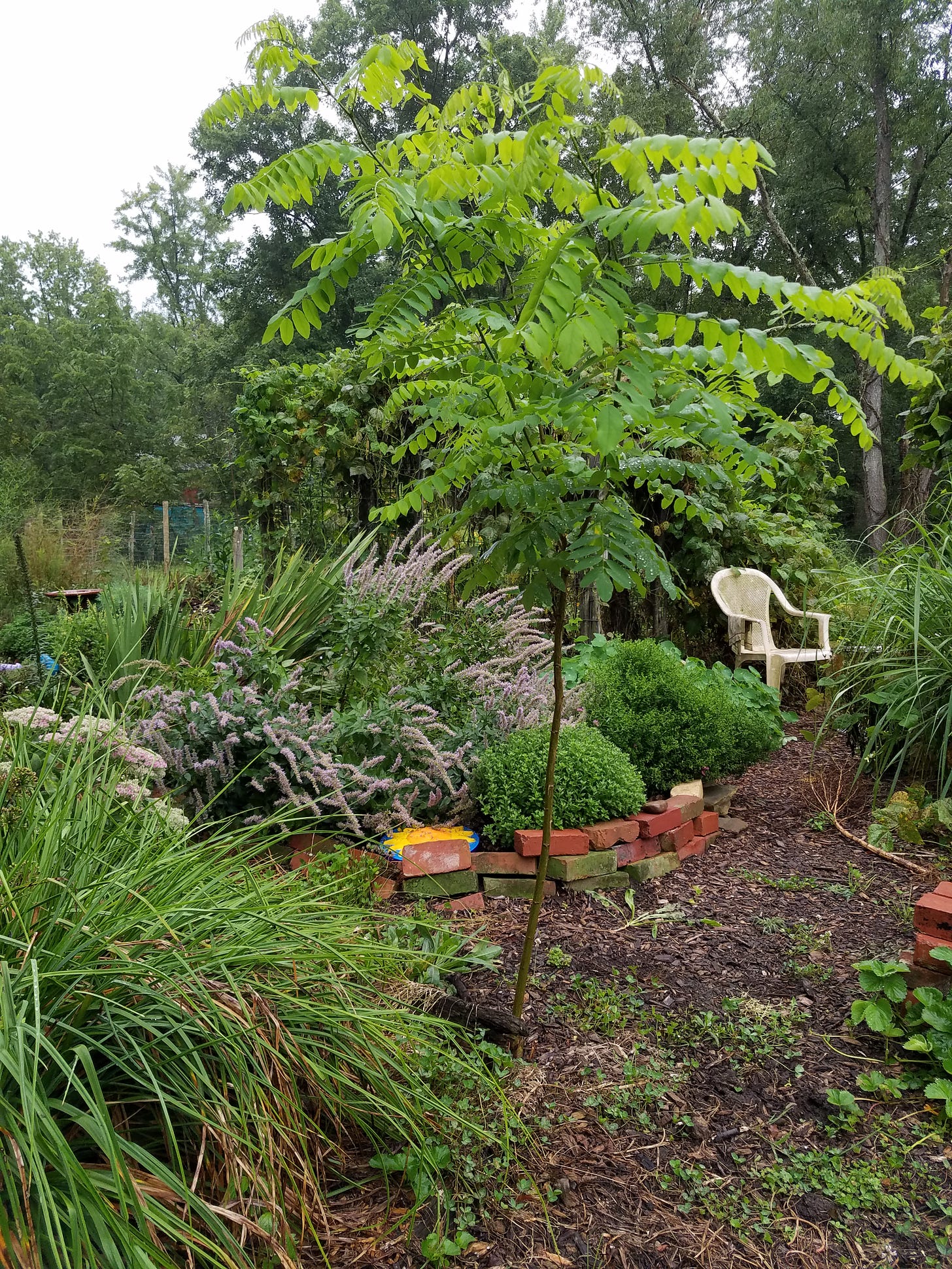About a year ago I made some videos about working with nature. (Handy links are below if you'd like to check them out.) Something bothered me at the time about the phrase working with nature—it's banal yes, but more importantly it's relative. There's a continuum of cooperation with nature in agriculture. On one end are hydroponics, industrial agriculture, and attempting to build chinampas in the desert. At the other end are nomads migrating seasonally with their herds, and hunter/gatherers improving habitat over generations to encourage their preferred foods.
Most of us fall somewhere in the middle of this range. In the woods and the Savanna my work relationship with Mother Nature is the most copacetic. She grows the plants and I remove invasives that stifle their growth, adding native tree saplings here and there, like a cleaning lady who occasionally shows up with a gift. My videos were filmed in the potager, however, a rich, well-hydrated spot that nature would really like to turn into a forest. I prefer it to be a vegetable, perennial, and herb garden and this creates some tension between Mother Nature and me, as it is a constant struggle to keep the trees from taking over. On one hand I work with nature on a micro level by tolerating bugs and certain weeds, feeding the soil good things, and keeping it covered. But I must constantly remove large perennial weeds like wingstem and iron weed, plus the seedling oaks, mulberries, cherries, black locusts, and mimosas that pop up everywhere. It's a struggle to keep the garden in a state of suspended succession.
These days my goal is to fight nature less—to be a little closer to the nomad/hunter/gatherer end of the spectrum. There's less work at this end, and lessening the work load over time is necessary if I'm to continue maintaining the garden in my later years. One solution to reduce work is to replace annuals with perennial plants whenever possible. Perennials come back year after year, with no need to prepare seed beds and nurture seedlings. I don't plan on phasing out annual vegetables any time soon—they are a large part of our diet during the summer months—but over the years I've added a luscious array of perennial fruits including strawberries, raspberries (red and black), and honey berries.
Adding perennial plants is a step in the right direction, but even they can be overcome by enthusiastic weeds, hoping to form a meadow. Switching to shrubs and even trees is another positive step toward less work, and mirrors the natural succession from annual pioneers to woodland. In my ornamental/pollinator areas the decision to transition from perennials to native shrubs was an easy one since these areas were requiring constant maintenance. Starting in the most out of control spots where the battle with weeds was all but lost, I added cultivars of native viburnum, clethra, hydrangea and fothergilla. I also threw some azaleas into the mix because their brilliant spring colors are irresistible and they do well here.
These shrubs will attract pollinators and give shelter to wildlife, while simultaneously providing beauty. As they grow they will rise above, and cast shade on, the weeds that compete with them, which means each year I'll need to weed less. The area inside the fenced potager is limited, but shrubs and dwarf trees have a place there as well. I've located a peach and an Asian pear on the northern side where they don't shade the annual and perennial beds. A hardy orange tree and a massive hardy banana plant also grow nearby. Though not a true tree, (actually just a huge ornamental perennial in this climate) it might as well be. It grows to 15 feet and produces such dense shade that there's no need to weed around it.
Elsewhere in the garden lives a dwarf mulberry whose label promised an abundance of sweet fruits. It looks exactly like the worthless white mulberry volunteers that I remove regularly, but I'll reserve judgement and wait to see what it does next spring. In the very center of the garden stands a very obstinate black locust tree. Each fall for the past several years I've dug it out, only to have it return the following spring, stronger than ever. I finally gave up and decided to let it stay, but I will keep it pruned to about 8 feet and eventually chop it down to use as a fence post. If all goes to plan I'll have a constant (though very slow) supply of posts.
As a general rule, the smaller the plant, the more work to keep it from being overcome from weeds. Not only do trees and bushes that grow tall make for easier maintenance, they also add eye-pleasing interest and structure to the garden, and create microclimates where smaller plants with particular needs can be tucked. Their contributions to wildlife habitat shouldn't be underestimated. Perhaps my insect problems are minimal because birds feel so at home in the garden. I suspect this is the case, and another great reason to introduce trees and shrubs in the garden, and fight nature less.









